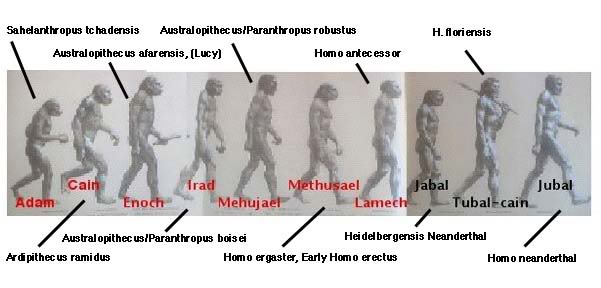There does seem to be a lack of intellectual honesty here.
I insist that it does not originate with my attention to reference what I post to established qualified scientific writers who support my comments.
That is the academically correct procedure in honest and intelligent discussions.
What seems somewhat dishonest is to insist that the reference used is ignored out of hand, rather than to admit that the publication of the recent book testifies to a general acceptance by the science editors for what is stated by authors whose credentials are appropriate to what the book concerns:
Editorial Reviews
From Publishers Weekly
Remarkable in scope and clarity,
this stunning collaboration among scientists, scholars and artists reveals the vast panorama of hominid evolution. The project began when
the Fossil Hominid Reconstruction and Research Team, led by anthropologist Sawyer and paleoartist Deak, began reconstructing fossilized skulls and skeletons, using meticulous procedures of forensic anatomical reconstruction to build three-dimensional models of contemporary humankind's known predecessors. Paleontological and anatomical data for each species were combined with anthropological and climatological research to produce this volume, covering 22 species and 7 million years. As chapters move chronologically from our most primitive antecedents, the poorly known "ape-men" of the African Sahel, through more well-known ancestors, such as the Australopithicines, Homo habilis and Neanderthals, the data grows in complexity and quantity; happily, fictional accounts of individual hominids draw readers into each new chapter. Illustrated with astonishingly life-like portraits of long-gone species, this volume also includes appendices that describe in detail how those portraits were achieved. Both inspiring and humbling, this look at humanity's ancestors-the worlds they inhabited, the challenges they faced and the legacies they left behind-is fascinating, informative, and deeply provocative.
Copyright © Reed Business Information, a division of Reed Elsevier Inc. All rights reserved.
From Booklist
As
paleoanthropologist Ian Tattersall points out in his introduction to this marvelous new book on our ancestors, we
Homo sapiens find ourselves in the unusual situation of being alone on the planet as the sole surviving hominid. For most of the history of the hominid lineage, the world was home to coexisting prehumans and humans. From paleontological and anthropological data previously available only in scientific publications, the authors have created an accessible field guide to our extinct cousins. Beginning each section with a short slice-of-life story about the species in question brings that hominid to life, with the supportive scientific evidence following. Skulls are often the most common or complete fossil evidence, so they are well described, along with other remains (bones and/or tools), fossil sites, other associated animals, the probable climate, and a discussion of the species' classification. Striking illustrations accompany the write-ups and breathe life into dry fossil bones. This very current book explains the science as it now stands and is a must-buy for all libraries.
Nancy Bent
Copyright © American Library Association. All rights reserved








